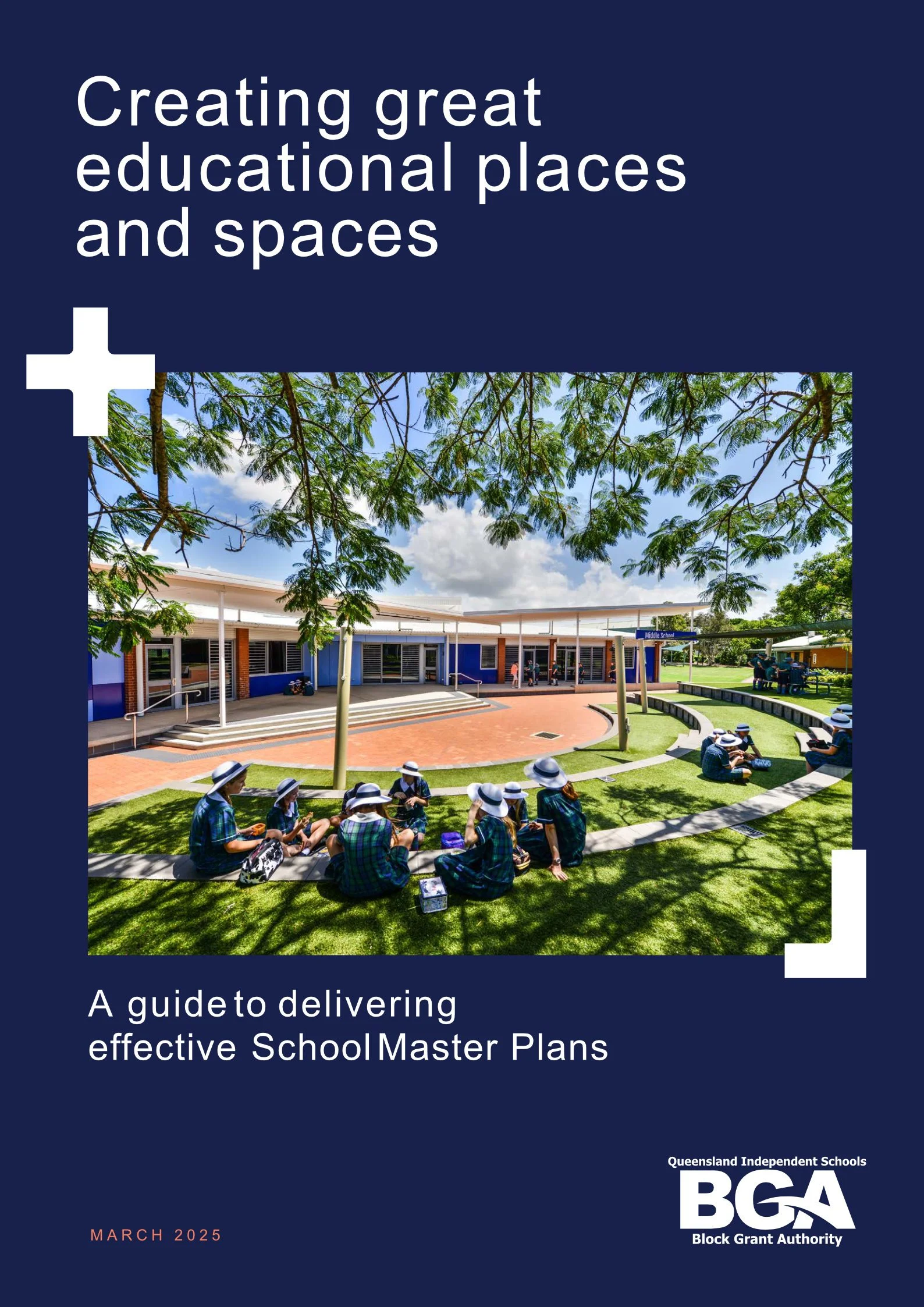Is your school making the most of the facilities through effective master planning?
Buildings and facilities are not just your school’s most important tangible asset; they also play a critical role in educational outcomes and financial stability. So, investing in a school master plan - to guide the design and delivery of upgrades and new facilities - is one of the most prudent decisions school leaders can make, for long-term performance.
Did you know that the Queensland Independent Schools Block Grant Authority (QIS BGA)* has recently launched a new guide to assist non-government schools to develop a school master plan, with input from designers and architects?
It’s a great resource – you can access your free copy here – and it outlines the steps schools should take to develop an effective master plan.
1. Project preparation, planning and approach
Establish a strong leadership and planning team internally
Effectively engage stakeholders early (see in image below)
Develop a comprehensive project brief and budget.
2. Choose your team
Select experts with relevant experience
Prioritise long-term value over upfront costs
Promote collaboration between school and specialists
3. Map, analyse and interpret
Use reliable data and thorough site analysis
Align design with educational needs and value
Ensure school community input shapes the plan
4. Define vision and guiding principals
Set a clear vision rooted in school values
Create user focused design principles
Apply principles to guide decisions and measure success
5. Develop spatial strategies
Develop tailored strategies for movement, landscape, built form, land use and infrastructure
Create a detailed implementation and phasing plan to manage priorities, costs , timelines, approvals and sustainability goals
6. Initiate projects
Use the master plan to guide and benchmark projects
Refine the master plan into detained project briefs that align with the school values and strategic goals
7. Evaluate success to inform improvement
Review masterplan regularly and adapt when needed
Use Post Occupancy Evaluations (POE) to assess and improve facility performance
School Master Planning in Action
In 2018, Giarola Architects was engaged by the principal of Mancel College to lead the development of a new master plan for the school’s Fig Tree Pocket site. Mancel College had relocated to this former state primary school in April 1978.
Since completing the Mancel College master plan, Giarola Architects has designed and delivered new buildings in Stages One and Two.
Based on our longstanding collaboration with Mancel College, we’ve observed the four key benefits of master planning in action:
Save Time & Money
Photo: Cam Murchison Photography
By undertaking a master plan first, Mancel College was able to stage subsequent building projects efficiently, leading to cost and time savings, and ensuring minimal disruption to daily operations for students and staff.
Principal Peter Foster said that the master plan provided an excellent roadmap to guide future development.
Also, like many Independent schools, Mancel College relies on its ability to raise capital funding from multiple sources, so the master plan enabled the school to seek and obtain the necessary funding in more manageable tranches.
“The design team worked dynamically to optimise certain features as key opportunities were identified throughout the process,” he said. “The master plan was, and remains, a fantastic tool to manage internal stakeholder expectations. The school needed a great deal of improvement in its facilities and we prioritised the delivery of critical and urgent needs in Building 1”
Lower Long-Term Costs
The new works triggered the need to replace and upgrade some existing site services - such as fire, water, electrical, drainage, access, security etc - and the master plan helped to prepare for these outgoings in a holistic way, thereby saving the school money in the long run.
The master plan also helped to minimise disruption across the construction phases.
“The effective coordination across the lifecycle of the programme – from initial concept, needs analysis, detailed design, planning, construction, fit out and overall implementation on a small site – enabled school operations to effectively continue”
Photo: Cam Murchison Photography
Boost Social Outcomes
The master plan revealed the school’s greatest needs, which determined the design and delivery pipeline.
In the first instance, Mancel College needed general learning areas and specialist classrooms for science, music and visual arts, as well as the learning centre (library) and multi-purpose sporting facilities.
Stages One and Two have been carefully integrated within the existing campus, respecting its character and enhancing functionality and flow between the older facilities and new buildings.
Future Proof Your Campus
The master plan enabled the entire project team to gather helpful insights about how the new buildings actually perform in use, and to integrate these lessons into subsequent stages, thereby continuously enhancing and improving learning outcomes for students.
We conducted post-occupancy evaluation research at Mancel College in conjunction with Kate Simpson, Associate Professor at Griffith University, Autism Centre of Excellence. You can read more about the study and its findings here.
If you’d like to unlock the benefits of master planning for your school, we’d be delighted to talk about how we can share our considerable expertise. We invite you to email us or call our studio on 07 3878 3330.
* QISBGA is a not-for-profit organisation responsible for administering State and Australian Government funding for school facilities in Queensland’s independent schools.
-
October 2025
- Oct 16, 2025 Transform Your Classroom: The Power of a Well-Designed Teaching Wall Oct 16, 2025
-
September 2025
- Sep 8, 2025 Why tuckshop design matters - and how to get it right? Sep 8, 2025
-
August 2025
- Aug 5, 2025 Is your school making the most of the facilities through effective master planning? Aug 5, 2025
- June 2025
-
May 2025
- May 27, 2025 Why we love entering our projects into architecture awards (our reasons go beyond mere vanity!) May 27, 2025
-
April 2025
- Apr 22, 2025 April is Autism Acceptance Month Apr 22, 2025
-
March 2025
- Mar 4, 2025 Giarola Architects’ promotes inclusivity in education, by design Mar 4, 2025
-
December 2024
- Dec 20, 2024 Kallangur State School wins a prestigious Learning Environment Queensland Award in 2024 Dec 20, 2024
-
August 2024
- Aug 9, 2024 A ground-breaking POE study highlights design strategies that enhance inclusivity in education Aug 9, 2024
-
June 2024
- Jun 18, 2024 Our Gin Gin SHS project recently won two awards Jun 18, 2024











